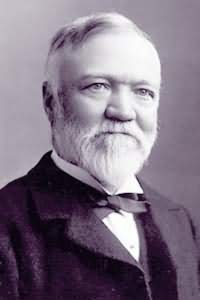Write a List – You may think it is basic management 101 to be told to ‘Write a List’. There is no doubt we all write lists. You may write one every day, or at the start of the week and diligently cross off activities as you complete them. The importance of a list can be seen through the eyes of Andrew Carnegie once the richest man in the USA and the creator of US Steel. An anecdote recounted by Richard Rumelt in his book ‘Good Strategy, Bad Strategy’ goes something like this:
In 1890, there was a cocktail party in Pittsburgh. Andrew Carnegie, who was a leading figure in the American steel industry, was attending. He was introduced to Frederick Taylor, who was becoming known as an expert on organisation at work. “Young man,” said Carnegie, squinting dubiously at the consultant, “if you can tell me something about management that is worth hearing, I will send you a cheque for ten thousand dollars.” Conversation stopped as the people nearby turned to hear what Taylor would say. “Mr Carnegie,” Taylor said, “I would advise you to make a list of the ten most important things you can do. And then, start doing number one.” And, the story goes, a week later Taylor received a check for ten thousand dollars.
Why did Carnegie send Taylor the cheque for ten thousand dollars? Clearly the benefit of writing a list goes further than scribbling down a set of things we need to do during the day or week (note: to-do list do have a place and can be vitally important as well!). In the context of strategic management a different sort of list comes to the foreground. We can only speculate about Carnegie’s list but the key to the contents must be in the specific advice he was given, that is: “make a list of the ten most important things you can do. And then start doing number one.” Other than making the list there are two key factors; the first is to concentrate on the most important things and the second is start taking action. No doubt Carnegie had a daily to-do list and could have easily written off Taylor’s advice as trite and wanting, but he didn’t, he listened carefully to the words.
When constructing a list of strategic objectives the single most common mistake executives make is to try and fix everything. The list becomes a wish-list, a mixture of objectives, activities and projects. By applying the advice above, two things are guaranteed to happen. The first: you will struggle to find the ten most important things you can do for your business. If you do find ten things (or more) then you are not looking at your business from the same perspective as Carnegie. That is, as an executive trying move the business forward strategically, you are probably dwelling on operational matters (and yes of course these need to be fixed, but that is a different topic).
The second: you will start thinking about priorities. When creating a list we naturally want to put the most important things at the top. This is a good thing, especially when the time comes to look at the budget and resources required to take action. You will soon realise that not everything on the list is affordable. Take heart in the fact that the best strategies concentrate on no more than three things per year.
Creating a list will also mean that the items on the list come to the front and centre. Provided the list is then published, they will remain there. This is of vital importance when developing strategic objectives. We have all suffered the effects of ‘the day job’, in other words, normal day to day activities take over. In the maelstrom of daily business we need to be constantly reminded about what is both important and urgent. The list in itself will not cause activity, it is now the second part of Taylor’s advice comes into play; “And then start doing number one.” Any list will only be effective if it is acted upon and acting upon the first item of the list is generally a very good place to start.
If Carnegie though this advice was worth ten thousand dollars in 1890, how much is it worth today?


